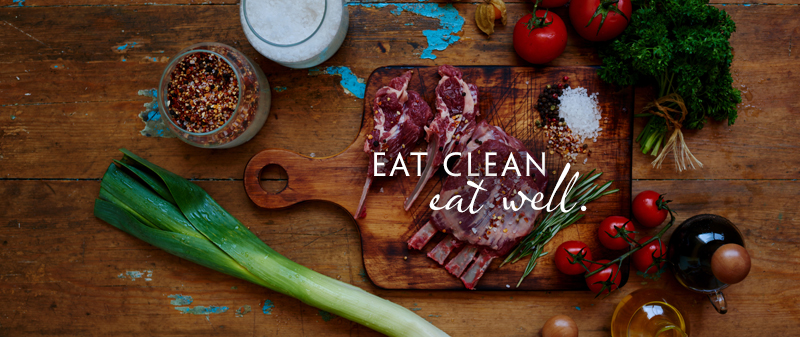
Contrary to popular belief, weight loss is not just about calories in, calories out. There are some specific things you can add to your diet to improve metabolism and help you meet your weight loss goals. Senara’s Medical Weight Loss program coordinator, Dr. Stephanie Griffitts, has some favorite foods she recommends to her patients regularly.
Avocados
The fiber and healthy fats in avocados help you feel full longer. High fiber foods actually help burn calories because every gram of fiber you eat costs 7 calories to utilize. Plus, the fat in avocados is burned at a higher rate than other dietary fats. This increases metabolism and causes the body to burn more calories after it is eaten, it also helps reduce appetite and cravings.
Dark Berries
Dark berries are beneficial for several reasons. First, they are full of antioxidants. A study out of the University of Florida showed that people who ate a diet high in antioxidants weighed less than their counterparts even though they ate the same number of calories. The antioxidants found in strawberries block the enzyme that turns starch into simple sugar. This decreases blood sugar and insulin resistance. Dark berries also have ketones that act like capsaicin, which prevent the body from storing visceral fat. They also have high concentrations of polyphenols which increase energy, act as a good prebiotic, and can contribute to a feeling of calmness.
Grapefruit
Another power house food that combats fat is grapefruit. Grapefruit contains an organic compound called nootkatone, which activates the enzyme protein kinase (AMPK). AMPK increases energy production in the body, boosts metabolism, and encourages weight loss. Animal studies have shown that grapefruit works better that some anti-obesity drugs. Grapefruit also contains bromalin, which breaks down cellulite.
Tomatoes
Again, tomatoes are low calorie and full of vitamins and minerals. More importantly, tomatoes contain 13-oxo-ODA, an unsaturated fatty acid that activates the DNA in your cells to increases the body’s ability to burn fat.
Cruciferous vegetables
These include broccoli, cauliflower, brussel sprouts, kale, and cabbage. They are high in fiber and low in calories. The fiber content will help you feel fuller longer. Cruciferous veggies are also packed with phytonutrients. Phytonutrients combat xenoestrogens. Xenoestrogens can be natural or chemical, they are found in certain foods as well as in the environment. These mimic estrogens. Excess amounts of estrogen in the body can lead to weight gain, especially visceral fat in the abdomen. By combating xenoestrogen, the phytonutrients in cruciferous vegetables can help you lose that dangerous fat in your abdomen.
Spinach (green leafy veggies)
Spinach is also low in calories, but high in nutrients and antioxidants. The thylakoid membranes found in spinach promote cholecystokinin release. Cholecystokinin is a hormone produced in the GI tract that helps make you feel full and can decrease food cravings. Spinach also helps prevent spikes in insulin levels.
Sweet potatoes
Sweet potatoes are another vegetable that is high in fiber and low in calories, keeping you full longer. They are a great alternative to white potatoes because they have less starch and are more nutrient dense. More importantly, recent research has shown that they act as an appetite suppressant and can actually shrink fat cells.
Green tea
Green tea is one of the most famous “fat burning” foods. This is due to its high concentration of polyphenols, especially the catechin EGCE, or epigallocatechin. ECGC activates thermogenic fat burning in the body by inhibiting the enzyme COMT. COMT degrades norepinephrine, which in turn burns fat.
Almonds
Almonds are high in protein, fiber, and healthy fat. Research has shown that almonds lower LDL cholesterol (the bad cholesterol) and total cholesterol including non-HDL and VLDL. Lowering cholesterol reduces visceral belly fat. Reducing visceral fat in the abdomen significantly decreases the risk of heart disease, diabetes, and metabolic syndrome.
Eggs
Eggs are full of protein, healthy fats, and vitamins and minerals. Plus, they are very low calorie. The protein in eggs is the most complete form of protein you can eat. The vitamin B4 (choline) promotes lipolysis, helping the body turn stored fat into energy. This increase in metabolism is called the thermic effect.
Grass-fed Beef/Buffalo/Bison
Grass-fed beef/buffalo/bison are much leaner and higher in protein than beef that has been commercially raised. The extra protein helps you feel full longer, and because there is more protein and less fat, there are also fewer calories! For example, a 7oz commercially raised strip steak has 326 calories and 16 grams of fat vs. a 7oz grass-fed strip steak has 234 calories and only 5 grams of fat. The grass-fed steak also has higher levels of omega 3 fatty acids which will decrease the risk of heart disease. Bison in particular has a lot of B12 which can boost energy and shuts down the genes responsible for insulin resistance and the accumulation of visceral belly fat.
Pork Tenderloin
Pork has gotten a bad rap, and many “dieters” have sworn off it. However, a 3 oz serving of pork tenderloin has less fat than a skinless chicken breast, 24 grams of protein, and 83 grams of choline. Choline (B4) promotes lipolysis, or the conversion of stored fat into energy. Making the body “burn” more fat!
Dark Chocolate
Dark chocolate is any chocolate that contains at least 70% cacao. It has been shown to help decrease blood pressure, increase circulation, and prevent arteriosclerosis. Dark chocolate also slows the digestion and absorption of fat and carbohydrates. The flavonoids in dark chocolate decrease insulin resistance and prevent blood sugar spikes by decreasing levels of ghrelin. Ghrelin is the hormone that makes us feel hungry. Polyphenols promote a sense of calmness and contentment, increase energy, decrease inflammation, and work as a great prebiotic.
